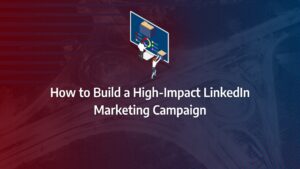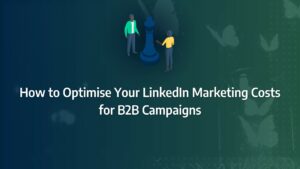A nurturing campaign, often referred to as drip marketing, is an automated email strategy designed to engage contacts through a series of personalised, scheduled emails over an extended period. These campaigns are proven to deliver far superior results than single-send emails, with open rates approximately 80% higher and click-through rates tripling those of traditional blast emails. Whether you’re aiming to nurture new leads, retain existing customers, or boost brand awareness, a well-crafted nurturing campaign can help you achieve your goals efficiently.
The Key Elements of an Effective Nurturing Campaign
Segment Your Audience
Segmentation is critical for ensuring your message resonates deeply with your audience. By dividing your contact base into smaller, more manageable groups based on shared characteristics, you can create more tailored and relevant messages. It’s essential to move beyond basic metrics like demographics or job titles and instead focus on behaviours, pain points, and interests that allow you to connect more personally.
Here are some actionable steps to effectively segment your audience:
- Define the customer journey: Mapping out the stages your customers go through before making a purchase will help you target key touchpoints effectively.
- Profile your ideal customer: Identify the traits of your best-performing customers and use them to create a detailed profile.
- Test and refine continuously: Use analytics to track how each segment responds and adjust your segmentation to improve results.
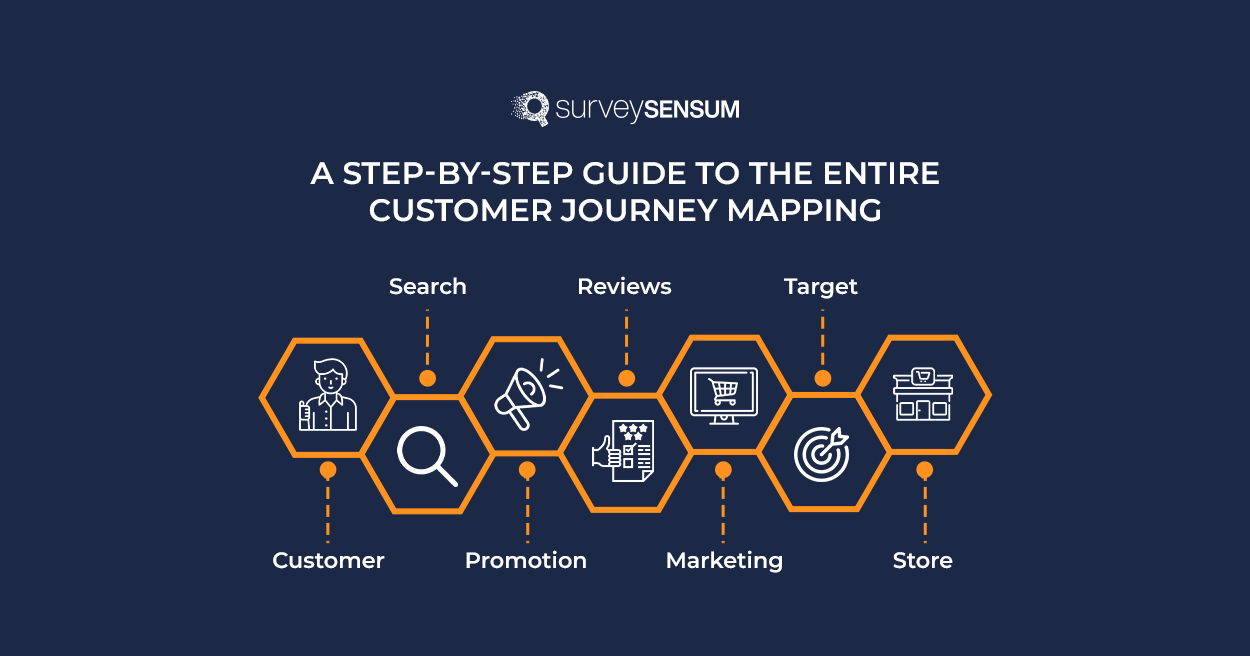
Define Your Goals
Clear, well-defined goals are the foundation of any successful nurture campaign. Whether you’re focused on lead generation, sales, customer retention, or brand building, knowing precisely what you want to achieve will allow you to shape your strategy and tactics accordingly.
Here are some tips for defining effective goals:
- Set SMART goals: Your objectives should be Specific, Measurable, Achievable, Realistic, and Time-bound, ensuring clarity and focus.
- Identify success metrics: Define key metrics like awareness, acquisition, activation, and revenue to track campaign performance.
- Review periodically: Regular evaluations of your goals and metrics will ensure they remain aligned and highlight areas for optimisation.
Personalise and Provide Value
Personalisation is central to the success of any nurturing campaign. Tailoring your content to the individual recipient’s preferences, pain points, and stage in the buying journey helps establish credibility and trust. Additionally, providing valuable, insightful content builds a stronger connection with your audience.
To enhance personalisation, follow these tips:
- Research audience needs: Understand your audience’s pain points by asking relevant questions and analysing their behaviour.
- Create targeted content: Ensure your content speaks directly to their challenges and stage in the buyer’s journey.
- Be strategic: Timing is crucial. Use automation and AI to ensure the right message reaches the right audience at the right time.
Be Consistent
Consistency is key to building trust and engagement throughout your nurturing campaigns. By maintaining uniformity in your messaging across all platforms, you create a cohesive brand experience that encourages interaction and, ultimately, conversions. Automation tools play a pivotal role in ensuring consistency across every touchpoint.
Here are some strategies to maintain consistency:
- Utilise automation tools: Automate your messages across various channels to maintain consistency in timing and tone.
- Keep messaging uniform: Ensure your core message is consistent across all content, campaigns, and platforms.
- Educate your team: Make sure everyone involved in content creation understands the overarching goals and key messaging of your nurturing campaign.
Measure Your Results
The ability to measure and refine your nurturing campaigns is essential for improving their effectiveness. By analysing the performance of key metrics, you can identify what’s working, what’s not, and how to optimise for better results.
Here’s how to measure your nurturing campaign success:
- Monitor essential metrics: Track your return on investment (ROI), conversion rates, open rates, click-through rates, and lead sources to evaluate performance.
- Optimise based on data: Regularly analyse your results and make data-driven adjustments to improve performance.
- Continuously improve: Use insights gained from ongoing analysis to refine your campaigns and generate better outcomes over time.
Types of Lead Nurturing Campaigns
Welcome Campaign
A fundamental principle of online marketing is to “give before you ask.” This approach forms the backbone of an effective welcome campaign, where you offer value—often in the form of downloadable resources—to new subscribers. It’s crucial to remember that new subscribers are not yet your existing customers, so your communication should reflect this. Instead of sending a single email, you must provide a comprehensive series of welcome emails to build rapport and trust.
The tone of these lead nurturing emails should be light and educational, aiming to introduce the subscriber to your brand and its benefits.
The welcome email series begins by confirming the subscriber’s opt-in. Once confirmed, follow up with a second email that clearly explains:
- What your product is
- Why your product is beneficial to them
Subsequent emails should be well-timed and strategic, gradually delivering the essential information that the recipient “must know” about your brand. You can adjust the length and frequency of this drip campaign as you see fit, ensuring the email cadence is neither too frequent nor too sparse.
The primary advantage of welcome campaigns is their universal application to all new subscribers. At this stage, there’s no immediate pressure to sell. The focus is entirely on keeping the audience engaged. While personalisation is important, it doesn’t need to be highly detailed in this early stage. Given the repetitive nature of welcome campaigns, they can be easily automated using customer relationship management (CRM) software to ensure consistency.
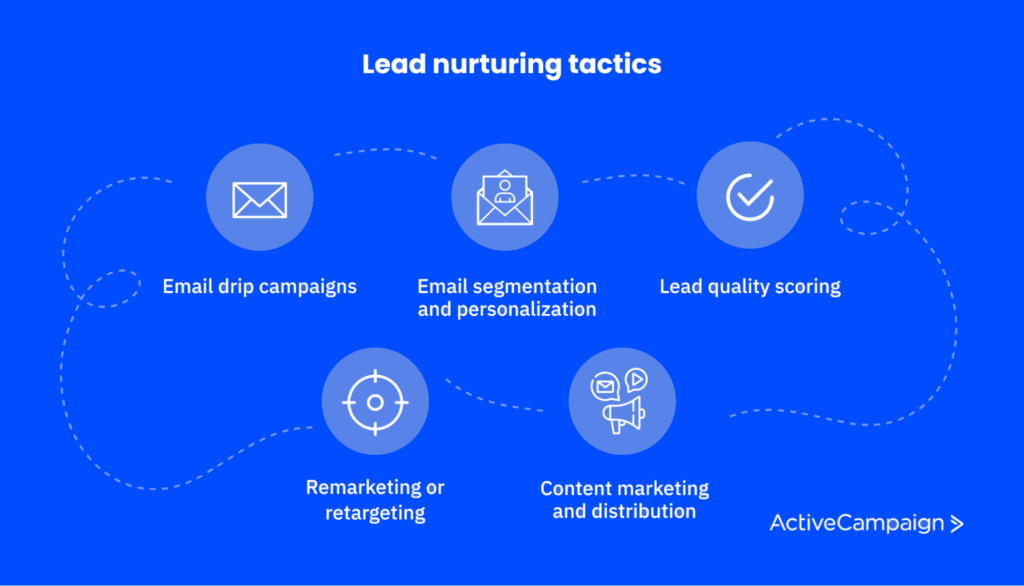
“Top of Mind” or Post-Welcome Campaign
Once your subscribers have familiarised themselves with your brand, the challenge is to remain in their consideration. This is where the post-welcome or “top of mind” campaign comes into play.
At this point in their journey, leads typically require more time or information before making a purchase decision. They may be exploring other brands, so your objective is to keep your brand at the forefront of their minds during this exploratory phase.
This campaign generally runs for a longer duration than the initial welcome series, with content that is less educational but more thought-provoking. While you should avoid aggressive selling, it’s important to communicate the ongoing value of your product or service.
Here are some types of content typically included in a post-welcome drip campaign:
- Blog posts
- White papers
- Introductory videos
- Informational webinars
- Industry news and updates
- Data-driven infographics
Like the welcome series, this campaign can be largely automated, ensuring your brand remains visible and relevant without the need for constant manual intervention.
Product Deep Dive Campaign
The product deep dive campaign is tailored for leads who have shown a heightened level of interest. By this point, they have likely engaged with your welcome and post-welcome emails and are seeking more detailed information about your offerings.
This campaign is designed to provide in-depth content that answers specific questions and highlights the technical aspects of your product or service. The emails in this series focus on answering the “how” questions, providing the recipient with the tools they need to make informed decisions. Here, you are primarily addressing decision-makers who require thorough technical insights before committing to a purchase.
Begin by addressing the key challenges your prospects face and then demonstrate how your product’s features and benefits can help solve these issues. Some effective content types for this campaign include:
- Proof of concept papers
- Case studies
- Customer testimonials
- Detailed research data
Case studies are particularly valuable at this stage, showcasing real-life examples of how your solution helped others by presenting the “before” and “after” results.
While the content needs to be rich and informative, it’s important to note that these leads are not yet paying customers. Therefore, you should focus on product-specific content without delving into re-engagement strategies just yet. While some parts of this series can be automated, the personalised nature of these emails may require manual adjustments to ensure relevance.
Customer Education Drip Series
In certain cases, it’s essential to educate potential customers on why they need your products or services. The goal here is to dive deep into the customer’s world and show them tangible ways your offerings can enhance their business or life. To take this one step further, you could even conduct a SWOT (Strengths, Weaknesses, Opportunities, and Threats) analysis on their behalf, identifying areas where your products can make a difference.
When crafting content for this type of nurturing campaign, the emphasis must shift from your product to the customer. Your goal is to educate the lead about the opportunities they may be missing, painting a clear picture of how your solution can help bridge that gap. It’s only after providing this educational value that you present your product as the natural solution to their challenges.
This approach is particularly effective in re-engagement campaigns, where leads need to be reminded of the value they could unlock by choosing your offering.
Competitive Differentiator Campaign
This email campaign is aimed at leads who have not converted despite receiving previous emails such as the “Top of Mind” or “Product Deep Dive” campaigns. The strategy here is straightforward: after sharing your best content, you focus on demonstrating the risks of not using your product, particularly in comparison to competitors.
This campaign works especially well in two situations. First, when the prospect remains unconvinced after your earlier nurturing campaigns. They may be considering a competitor’s product, so you need to emphasise what differentiates your offering and why it’s superior. Secondly, if the lead is currently using a competitor’s product, but there are dissatisfaction points with their current solution. These prospects may be more open to change, particularly if you offer a better alternative.
In these emails, clearly articulate the unique selling points of your products, particularly focusing on what sets them apart from the competition. However, avoid aggressive comparisons—emphasising the disadvantages of not choosing your product while indirectly highlighting competitor weaknesses can be far more persuasive. This method, known as “ghosting,” allows you to subtly contrast your offering without directly naming competitors, maintaining a professional tone.
For high-value prospects, it may be worth scheduling one-on-one sales discussions. Alternatively, you could use surveys to understand their needs better and craft a bespoke plan if your standard offerings don’t meet their requirements.
Remember, avoid negative talk about competitors—it’s seen as distasteful and rarely converts well. Keep your tone matter-of-fact and focused on the strengths of your own products.
Authority Perception Campaign
As leads near the final stages of the buying process, they often seek reassurance that they’re making the right decision. The Authority Perception Campaign is designed to provide exactly that. In these emails, your objective is to solidify your brand’s authority and expertise, giving leads the confidence they need to move forward.
Content for this nurturing campaign might include:
- Industry reports where your product or service ranks highly
- The top 3-5 high-traffic content pieces, prioritising those with high engagement (e.g., comments) rather than just views
These leads are typically on the verge of converting—they understand your value but need reassurance. For these subscribers, price is not necessarily a barrier. Instead, they require confirmation that your product is the right fit for their needs.
This campaign is less about persuasion and more about reinforcing the decision they’re about to make. By showcasing your authority, you instil the final bit of confidence they need to cross the line and become a customer.
Discount Campaign
The discount campaign, like the authority campaign, is an “end-of-funnel” strategy aimed at leads who have engaged with your previous nurturing campaigns but have yet to make a purchase. These leads often refrain from converting due to budget constraints or because the price point of your product may be higher than they are willing to commit to.
This campaign works by sending a well-timed email offering a discount or free shipping coupon. The key here is precision—ensuring that only those who genuinely require a discount to convert receive it. Timing is crucial. Your emails should be optimally timed to reach the segment that genuinely needs an incentive to proceed with their purchase, not those who are delaying their decision for unrelated reasons. By targeting the right audience within your nurturing campaigns, you increase the likelihood of conversions without undervaluing your product.
Getting Started Campaign
Once a lead has converted into a paying customer, the nurturing process doesn’t end. The Getting Started campaign is designed specifically for new customers, providing them with essential information about the features and offerings of the paid version of your product or service. Grouping paying customers into a distinct segment ensures that the content shared in this series remains highly relevant.
This campaign is structured to offer immediate value and assistance by covering:
- Next steps: Clear guidance on what customers should do after making their purchase.
- FAQs: A comprehensive list of frequently asked questions to pre-emptively address potential concerns.
- Product update timelines: Information on upcoming version releases or new features.
- Training resources: Access to tutorials or training materials to help customers maximise the value they get from your product.
An effective nurturing campaign post-purchase sets the tone for a strong customer relationship, reinforcing satisfaction and reducing the likelihood of buyer’s remorse. It also enhances customer service by providing key resources early on in their journey.
Upsell Campaign
If your organisation currently offers just one product, now is the time to create a full value ladder. This approach involves structuring your offerings from low-priced products at the bottom to high-ticket items at the top, with mid-range products strategically placed in between.
The upsell campaign focuses on moving customers up this value ladder. After a customer makes their initial purchase, you introduce them to higher-value features or products that are not included in their current plan. By showcasing these additional offerings, you create an opportunity to generate incremental revenue from existing customers.
One highly effective technique is to offer a short, free trial of premium features. This allows customers to experience the value of higher-tier offerings first-hand. Once they see the benefits of upgrading, it becomes much easier to guide them to the next step on the value ladder.
Since this campaign targets paying customers, it’s less focused on overt sales tactics and more about demonstrating value. Offering limited-time discounts on upgrades can further encourage conversions within your nurturing campaigns.
Affiliate Enablement Drip Series
This particular campaign isn’t aimed at your customers but rather at those who help sell your product—your sales team and affiliates. Regular enablement emails ensure that your affiliates have the resources they need to promote your offerings effectively.
These emails serve two purposes:
- Demonstrating appreciation: By staying in touch, you show affiliates that you value their contribution.
- Providing updated materials: Fresh marketing content is essential to keep campaigns relevant and successful.
Additionally, you can use this drip series as a feedback loop. By asking for input on customer responses during the sales process, you can gain valuable insights into what’s working well and where improvements are needed. This feedback will allow you to adjust your strategies and refine the sales funnel within your broader nurturing campaigns.
Renewal Campaigns
Similar to the welcome campaign, renewal campaigns should be automated to reduce the workload on your sales team. These emails are directed at customers whose subscriptions are about to expire, and the content is designed to remind them of the upcoming renewal.
Most customers won’t remember their renewal dates, and the act of renewing can often feel like a psychological barrier. By sending multiple reminders spread across the month leading up to their renewal date, you significantly reduce the chance of subscription lapses.
It’s crucial to emphasise the value they’ve gained from your product during the contract period. If a customer has had issues, they may be hesitant to renew. Your job is to overcome this by highlighting both the tangible and intangible benefits they’ve received—such as cost savings or time efficiencies.
Use concrete numbers and visuals, such as charts, to help them recall the positive outcomes of using your product. By focusing on the specific value your brand has delivered, you make the renewal decision easier and more compelling.
Best Practices for Optimising Email Campaigns
1. Define Your Target Audience
A comprehensive understanding of your target audience’s pain points, preferences, and expectations is critical to optimising your nurturing campaigns. The more precise your audience insights, the more relevant your messaging will be.
Here are the key steps to effectively identify and define your target audience:
- Collect data: Gather a range of data on your existing customers and website visitors. This should include demographic details, purchase history, browsing behaviour, and any other pertinent data points.
- Conduct market research: Perform detailed market research to gain deeper insights into industry trends, customer needs, and competitor activity.
- Identify common characteristics: Look for recurring patterns across your customer data, such as age, gender, location, income, job roles, and interests.
- Create buyer personas: Use the gathered data to craft detailed customer personas, enabling you to tailor your content and emails for each segment effectively.
2. Build a High-Quality Email List
The quality of your email list is fundamental to the success of your nurturing campaigns. A robust list built on genuine interest is far more valuable than a large but disengaged one.
Here’s how to build and maintain a high-quality email list:
- Offer valuable gated content: Provide engaging content such as e-books, templates, guides, or exclusive offers in exchange for contact details. This encourages sign-ups from genuinely interested prospects.
- Create compelling opt-in forms: Ensure your opt-in forms are visually appealing and user-friendly. These can take the form of pop-ups or embedded forms on your site.
- Leverage lead magnets: Use powerful lead magnets like checklists, in-depth reports, or access to exclusive content to incentivise sign-ups.
- Utilise social media: Promote your email list through your social media channels to drive followers to subscribe.
- Host webinars or events: Hosting industry-related webinars or events that require email opt-ins is an excellent way to grow your list while offering immediate value.
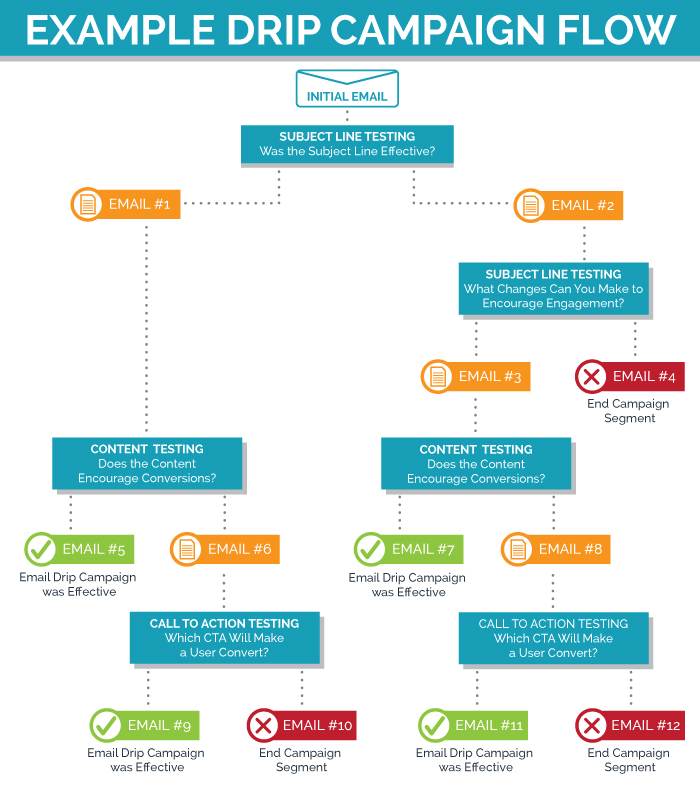
3. Optimise Subject Lines
Your subject line is the first thing recipients see, and its effectiveness can significantly influence whether your email is opened. Research by Omnisend reveals that 35% of recipients open emails based purely on the subject line.
Here are some best practices for optimising your email subject lines:
- Keep it concise: Based on our analysis, the ideal word count for subject lines is between 5 and 7 words.
- Create urgency: Use phrases that build urgency or curiosity, such as “limited time offer” or “breaking news”.
- Personalise: Include the recipient’s name or other personal details to make the email feel tailored specifically to them.
4. Provide Clear Calls-to-Action (CTAs)
The primary goal of your nurturing campaigns is to move recipients from clicking to converting. A strong CTA is crucial in achieving this.
Follow these steps for creating effective CTAs:
- Be prominent and eye-catching: Your CTA buttons, banners, or links should stand out in the email design. Consider using action-oriented phrases like “Click here” to drive immediate engagement.
- Place CTAs strategically: Position your CTA in the upper half of the email to ensure visibility, and repeat it in different areas of the message to give readers multiple opportunities to act.
- Create urgency: Use words that provoke immediate action, such as “Limited Time Offer” or “Act Now.”
5. Offer a Variety of Shareable Links
One of the easiest ways to extend the reach of your nurturing campaigns is to encourage your current subscribers to share your emails with their own contacts. By providing simple, shareable options, you can dramatically increase your exposure.
Here are some ways to make your emails more shareable:
- Include a forward-to-a-friend link: This allows recipients to quickly forward your email to someone they believe would find it valuable.
- Leverage social media links: Make it easy for readers to share your content across social platforms by including social sharing icons in every email. With nearly 3 billion people using social media, this is an excellent way to expand your reach.
6. Optimise for Mobile Devices
A 2022 Pew Research report showed that 76% of consumers now use smartphones to shop online, and this extends to email. Optimising your emails for mobile is therefore not just recommended—it’s essential.
Here’s how to ensure your emails perform well on mobile devices:
- Use mobile-responsive design: Ensure your emails are designed to automatically adjust for different screen sizes.
- Prioritise simplicity: Keep your design clean, with a clear, singular focus on the CTA.
- Reduce image sizes: Large images can slow down load times on mobile devices, leading to a poor user experience.




